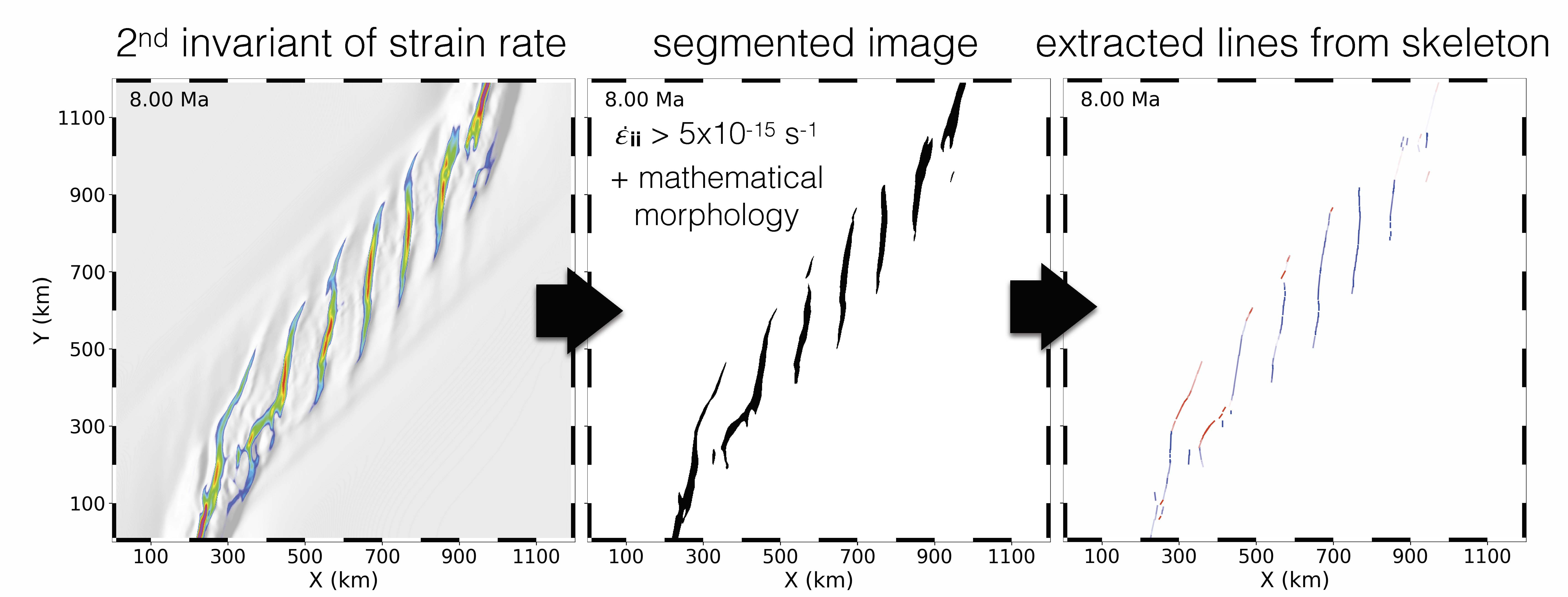Over the past three decades forward thermo-mechanical numerical modeling has transformed the way geoscientists look at the long-term evolution of the lithosphere. More than just generating aesthetically pleasing pictures, outputs from numerical models contain a rich source of quantitative information that can be used to infer the evolution of rocks in ancient and actively deforming regions. For example, pressure-temperature-time evolution of rock materials have long been extracted from 2D and 3D forward thermo-mechanical numerical models as these three scalar variables are direct outputs from the codes. Such data have been used successfully by petrologists and modelers to decipher the fate of metamorphic rocks in orogens providing valuable insights into the formation mobile belts. However, problem arises when one tries to extract structural patterns - which are not a scalar field computed in the codes - from 3D models. Structural data is the next step to adding value to any numerical experiment. How can we then compare, for example, the active surface deformation distribution in a 3D model with faults orientation in nature? It can be done manually by measuring active fault orientations at the surface of a model, but this is time consuming and might introduce bias in delineating individual faults. Some automatized attempts have relied on stress data, but as 3D strain dominates in 3D models, we cannot safely apply an Andersonian model to infer fault orientation from the stress tensor.
In a recent contribution doi.org/10.1016/j.epsl.2019.115952, we introduced an image processing and shape recognition workflow designed to extract the active faults orientation from surface velocity gradients of oblique rifting models. In order to measure the active faults lengths and directions along with their distribution at the surface of the model we have implemented an automated sequential mapping technique based on the second invariant of the strain rate tensor and using a suite a Python functions. Active fault direction measurements are achieved using a probabilistic method for extracting linear features orientation from any surface. This method has the undeniable advantage to avoid interpretation bias. Strike measurements for individual segments are weighted according to their length and orientation distribution data are presented in an equal-area moving average rose diagrams produced using a weighted method. This method has been successfully used to track the progressive surface deformation patterns induced by faults within oblique rift zones undergoing constant extension in the absence of surface processes.
The workflow for extracting surface fault orientation could be used to extract lineaments from any surface. Our workflow aimed to produce visual information that will resonate to seasoned structural geologists and assist with comparing experimental and observational data. Although at this stage the method works on a surface, it could be extended to measure active fault and shear zones geometry in 3D in the future.
Contributed by:
Guillaume Duclaux
Université Côte d'Azur
References
Duclaux, G., Huismans, R. S., & May, D. A. (2020). Rotation, narrowing, and preferential reactivation of brittle structures during oblique rifting. Earth and Planetary Science Letters, 531, 115952. https://doi.org/10.1016/j.epsl.2019.115952

Figure 1. Illustration of the active fault extraction workflow based on Python image processing methods and probabilistic Hough transform of Strain rate invariant at the surface of an oblique rift model.

Figure 2. The (left) extracted fault distribution (grey rose diagram) is compared to the (right) stress eigenvectors distribution (red rose diagram).